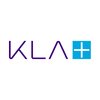Filter interviews by
Caepro Technologies CFD Engineer Interview Questions and Answers
9 Interview questions
The equations governing CFD are based on fundamental laws of physics.
Based on conservation of mass, momentum, and energy
Navier-Stokes equations are fundamental in fluid dynamics
Incompressible flow assumes constant density
Reynolds-averaged Navier-Stokes (RANS) equations are commonly used
Relaxation factor in CFD controls the rate at which the solution converges towards the final solution.
Relaxation factor is a parameter used in iterative methods to control the rate of convergence.
A higher relaxation factor can speed up convergence but may lead to instability.
Conversely, a lower relaxation factor can improve stability but may slow down convergence.
Optimal relaxation factor varies depending on the p...
Y+ is a dimensionless wall distance used in CFD to determine the appropriate mesh resolution near the wall.
Y+ is used to ensure accurate modeling of boundary layer flow near walls.
It is calculated as the ratio of the distance from the wall to the first cell center to the wall shear stress.
Y+ values less than 1 indicate a viscous sublayer, while values greater than 30 indicate a fully turbulent flow.
Properly resolv...
Boundary layer is the layer of fluid adjacent to a solid surface where the flow velocity changes from zero at the surface to the free stream velocity.
Boundary layer is a region in a fluid flow where viscous effects are significant.
It is characterized by a gradual increase in flow velocity from the solid surface to the outer flow.
The boundary layer thickness depends on the Reynolds number and the surface roughness.
...
Common turbulent models in CFD include k-epsilon, k-omega, and Large Eddy Simulation (LES).
k-epsilon model is widely used for industrial applications due to its simplicity and computational efficiency.
k-omega model is known for its ability to handle adverse pressure gradients and near-wall turbulence.
Large Eddy Simulation (LES) is used for resolving large-scale turbulent structures in high Reynolds number flows.
Re...
Steady state is when a system's variables do not change over time, while transient state is when variables change with time.
Steady state: system variables remain constant over time
Transient state: system variables change with time
Example: A cup of hot coffee cooling down to room temperature is a transient state process
Example: A refrigerator maintaining a constant temperature is a steady state process
The governing equations solved in CFD include the Navier-Stokes equations, continuity equation, and energy equation.
Navier-Stokes equations describe the motion of fluid substances.
Continuity equation ensures mass conservation within the fluid domain.
Energy equation accounts for the transfer of thermal energy within the fluid.
Other equations like turbulence models may also be solved depending on the simulation requ...
Aerodynamic refers to the study of the motion of air and other gases, while hydrodynamic refers to the study of the motion of liquids, primarily water.
Aerodynamics deals with the flow of air around objects, such as airplanes, cars, and buildings.
Hydrodynamics focuses on the behavior of liquids, including water, in motion, such as in rivers, oceans, and pipes.
Both fields are crucial in designing efficient vehicles,...
Mesh dependent test in CFD is a test to determine the sensitivity of the simulation results to changes in the mesh resolution.
Mesh dependent test involves running the CFD simulation with different mesh resolutions to see how the results vary.
It helps in assessing the accuracy and reliability of the simulation results based on the mesh quality.
The test is important to ensure that the simulation results are not heav...
Caepro Technologies CFD Engineer Interview Experiences
1 interview found
I applied via Naukri.com and was interviewed before Nov 2023. There were 2 interview rounds.
(10 Questions)
- Q1. What is mean by boundary layer?
- Ans.
Boundary layer is the layer of fluid adjacent to a solid surface where the flow velocity changes from zero at the surface to the free stream velocity.
Boundary layer is a region in a fluid flow where viscous effects are significant.
It is characterized by a gradual increase in flow velocity from the solid surface to the outer flow.
The boundary layer thickness depends on the Reynolds number and the surface roughness.
There...
- Q2. What are the turbulent model used in CFD?
- Ans.
Common turbulent models in CFD include k-epsilon, k-omega, and Large Eddy Simulation (LES).
k-epsilon model is widely used for industrial applications due to its simplicity and computational efficiency.
k-omega model is known for its ability to handle adverse pressure gradients and near-wall turbulence.
Large Eddy Simulation (LES) is used for resolving large-scale turbulent structures in high Reynolds number flows.
Reynold...
- Q3. What is mean by aerodynamic or hydrodynamic?
- Ans.
Aerodynamic refers to the study of the motion of air and other gases, while hydrodynamic refers to the study of the motion of liquids, primarily water.
Aerodynamics deals with the flow of air around objects, such as airplanes, cars, and buildings.
Hydrodynamics focuses on the behavior of liquids, including water, in motion, such as in rivers, oceans, and pipes.
Both fields are crucial in designing efficient vehicles, stru...
- Q4. What is Mesh dependent test in CFD?
- Ans.
Mesh dependent test in CFD is a test to determine the sensitivity of the simulation results to changes in the mesh resolution.
Mesh dependent test involves running the CFD simulation with different mesh resolutions to see how the results vary.
It helps in assessing the accuracy and reliability of the simulation results based on the mesh quality.
The test is important to ensure that the simulation results are not heavily i...
- Q5. Difference between steady state and transient state?
- Ans.
Steady state is when a system's variables do not change over time, while transient state is when variables change with time.
Steady state: system variables remain constant over time
Transient state: system variables change with time
Example: A cup of hot coffee cooling down to room temperature is a transient state process
Example: A refrigerator maintaining a constant temperature is a steady state process
- Q6. Draw velocity and thermal boundary condition for outer flow ( flow over flat plate) and inner flow ( flow through pipe)
- Ans.
Velocity and thermal boundary conditions for outer flow over flat plate and inner flow through pipe.
Outer flow (flow over flat plate): Velocity boundary condition - free stream velocity parallel to the plate, Thermal boundary condition - constant temperature at the plate surface
Inner flow (flow through pipe): Velocity boundary condition - parabolic velocity profile, Thermal boundary condition - constant heat flux at th...
- Q7. Significance of relaxation factor in CFD?
- Ans.
Relaxation factor in CFD controls the rate at which the solution converges towards the final solution.
Relaxation factor is a parameter used in iterative methods to control the rate of convergence.
A higher relaxation factor can speed up convergence but may lead to instability.
Conversely, a lower relaxation factor can improve stability but may slow down convergence.
Optimal relaxation factor varies depending on the proble...
- Q8. Y+ significance in CFD?
- Ans.
Y+ is a dimensionless wall distance used in CFD to determine the appropriate mesh resolution near the wall.
Y+ is used to ensure accurate modeling of boundary layer flow near walls.
It is calculated as the ratio of the distance from the wall to the first cell center to the wall shear stress.
Y+ values less than 1 indicate a viscous sublayer, while values greater than 30 indicate a fully turbulent flow.
Properly resolving Y...
- Q9. What are governing equations is solved in CFD?
- Ans.
The governing equations solved in CFD include the Navier-Stokes equations, continuity equation, and energy equation.
Navier-Stokes equations describe the motion of fluid substances.
Continuity equation ensures mass conservation within the fluid domain.
Energy equation accounts for the transfer of thermal energy within the fluid.
Other equations like turbulence models may also be solved depending on the simulation requireme...
- Q10. On what laws governing equations are based?
- Ans.
The equations governing CFD are based on fundamental laws of physics.
Based on conservation of mass, momentum, and energy
Navier-Stokes equations are fundamental in fluid dynamics
Incompressible flow assumes constant density
Reynolds-averaged Navier-Stokes (RANS) equations are commonly used
(3 Questions)
- Q1. Why do you want to work for our company?
- Ans.
I am impressed by your company's innovative projects and collaborative work environment.
I admire the cutting-edge technology and projects your company is involved in.
I value the collaborative work environment that your company promotes.
I am excited about the opportunity to contribute to a team of talented professionals.
- Q2. Why are you looking for a job change?
- Ans.
Seeking new challenges and growth opportunities in a different work environment.
Looking for new challenges and opportunities for professional growth
Interested in exploring different work environments and cultures
Seeking a role with more responsibilities and learning opportunities
- Q3. Why should we hire you?
- Ans.
I have a strong background in CFD analysis, with experience in complex simulations and problem-solving skills.
I have a Master's degree in Mechanical Engineering with a focus on CFD
I have completed multiple projects involving CFD simulations for aerodynamics and heat transfer
I am proficient in using software like ANSYS Fluent and OpenFOAM
I have a track record of delivering accurate and timely results in CFD analysis
Top trending discussions






Interview questions from similar companies

I appeared for an interview before May 2024, where I was asked the following questions.
- Q1. Sql query related questions
- Q2. Conflict situation based question

I applied via Company Website and was interviewed before Nov 2020. There was 1 interview round.
Interview Questionnaire
1 Question
- Q1. Questions on CFD solvers, projects and equations
Interview Preparation Tips
I applied via Campus Placement and was interviewed in Jan 2023. There were 3 interview rounds.

Basic aptitude questions like number series time and work etc
(2 Questions)
- Q1. Basic of cfd subject questions
- Q2. Project that you have done your graduation or postgraduate
Interview Preparation Tips
I applied via Naukri.com and was interviewed before Nov 2023. There were 2 interview rounds.
(10 Questions)
- Q1. What is mean by boundary layer?
- Ans.
Boundary layer is the layer of fluid adjacent to a solid surface where the flow velocity changes from zero at the surface to the free stream velocity.
Boundary layer is a region in a fluid flow where viscous effects are significant.
It is characterized by a gradual increase in flow velocity from the solid surface to the outer flow.
The boundary layer thickness depends on the Reynolds number and the surface roughness.
There...
- Q2. What are the turbulent model used in CFD?
- Ans.
Common turbulent models in CFD include k-epsilon, k-omega, and Large Eddy Simulation (LES).
k-epsilon model is widely used for industrial applications due to its simplicity and computational efficiency.
k-omega model is known for its ability to handle adverse pressure gradients and near-wall turbulence.
Large Eddy Simulation (LES) is used for resolving large-scale turbulent structures in high Reynolds number flows.
Reynold...
- Q3. What is mean by aerodynamic or hydrodynamic?
- Ans.
Aerodynamic refers to the study of the motion of air and other gases, while hydrodynamic refers to the study of the motion of liquids, primarily water.
Aerodynamics deals with the flow of air around objects, such as airplanes, cars, and buildings.
Hydrodynamics focuses on the behavior of liquids, including water, in motion, such as in rivers, oceans, and pipes.
Both fields are crucial in designing efficient vehicles, stru...
- Q4. What is Mesh dependent test in CFD?
- Ans.
Mesh dependent test in CFD is a test to determine the sensitivity of the simulation results to changes in the mesh resolution.
Mesh dependent test involves running the CFD simulation with different mesh resolutions to see how the results vary.
It helps in assessing the accuracy and reliability of the simulation results based on the mesh quality.
The test is important to ensure that the simulation results are not heavily i...
- Q5. Difference between steady state and transient state?
- Ans.
Steady state is when a system's variables do not change over time, while transient state is when variables change with time.
Steady state: system variables remain constant over time
Transient state: system variables change with time
Example: A cup of hot coffee cooling down to room temperature is a transient state process
Example: A refrigerator maintaining a constant temperature is a steady state process
- Q6. Draw velocity and thermal boundary condition for outer flow ( flow over flat plate) and inner flow ( flow through pipe)
- Ans.
Velocity and thermal boundary conditions for outer flow over flat plate and inner flow through pipe.
Outer flow (flow over flat plate): Velocity boundary condition - free stream velocity parallel to the plate, Thermal boundary condition - constant temperature at the plate surface
Inner flow (flow through pipe): Velocity boundary condition - parabolic velocity profile, Thermal boundary condition - constant heat flux at th...
- Q7. Significance of relaxation factor in CFD?
- Ans.
Relaxation factor in CFD controls the rate at which the solution converges towards the final solution.
Relaxation factor is a parameter used in iterative methods to control the rate of convergence.
A higher relaxation factor can speed up convergence but may lead to instability.
Conversely, a lower relaxation factor can improve stability but may slow down convergence.
Optimal relaxation factor varies depending on the proble...
- Q8. Y+ significance in CFD?
- Ans.
Y+ is a dimensionless wall distance used in CFD to determine the appropriate mesh resolution near the wall.
Y+ is used to ensure accurate modeling of boundary layer flow near walls.
It is calculated as the ratio of the distance from the wall to the first cell center to the wall shear stress.
Y+ values less than 1 indicate a viscous sublayer, while values greater than 30 indicate a fully turbulent flow.
Properly resolving Y...
- Q9. What are governing equations is solved in CFD?
- Ans.
The governing equations solved in CFD include the Navier-Stokes equations, continuity equation, and energy equation.
Navier-Stokes equations describe the motion of fluid substances.
Continuity equation ensures mass conservation within the fluid domain.
Energy equation accounts for the transfer of thermal energy within the fluid.
Other equations like turbulence models may also be solved depending on the simulation requireme...
- Q10. On what laws governing equations are based?
- Ans.
The equations governing CFD are based on fundamental laws of physics.
Based on conservation of mass, momentum, and energy
Navier-Stokes equations are fundamental in fluid dynamics
Incompressible flow assumes constant density
Reynolds-averaged Navier-Stokes (RANS) equations are commonly used
(3 Questions)
- Q1. Why do you want to work for our company?
- Ans.
I am impressed by your company's innovative projects and collaborative work environment.
I admire the cutting-edge technology and projects your company is involved in.
I value the collaborative work environment that your company promotes.
I am excited about the opportunity to contribute to a team of talented professionals.
- Q2. Why are you looking for a job change?
- Ans.
Seeking new challenges and growth opportunities in a different work environment.
Looking for new challenges and opportunities for professional growth
Interested in exploring different work environments and cultures
Seeking a role with more responsibilities and learning opportunities
- Q3. Why should we hire you?
- Ans.
I have a strong background in CFD analysis, with experience in complex simulations and problem-solving skills.
I have a Master's degree in Mechanical Engineering with a focus on CFD
I have completed multiple projects involving CFD simulations for aerodynamics and heat transfer
I am proficient in using software like ANSYS Fluent and OpenFOAM
I have a track record of delivering accurate and timely results in CFD analysis

I applied via Naukri.com and was interviewed before Feb 2021. There was 1 interview round.
(2 Questions)
- Q1. Technical : Basics of CFD, Basics related to Boundary conditions, Turbulence Modelling and solving methodology related to my work with previous employer.
- Q2. HR Round : Challenges in your previous job / What do you know about our company / Why should we hire you / How long will you serve in our company / Where do you see yourself in next couple of years.
Interview Preparation Tips
- CFD
The questions will be to test your a) basic knowledge about CFD, b) from your experience you mentioned in your resume and c) whether you have knowledge ( or attitude to learn quickly) related to the job you have applied.
As far as HR Round is concerned, you will be tested about your attitude & eagerness towards the job.
CFD Engineer Interview Questions & Answers
FLUIDMECH SOLUTIONSposted on 26 Jan 2024
I applied via Indeed and was interviewed before Jan 2023. There was 1 interview round.
(3 Questions)
- Q1. Theory knowledge & practical knowledge
- Q2. Fluid mechanics
- Q3. Computational fluid dynamics
I applied via Referral and was interviewed before Nov 2021. There were 3 interview rounds.

(4 Questions)
- Q1. What is your area of working?
- Q2. Can you work on cloud?
- Ans.
Yes, I have experience working on cloud-based CFD platforms.
I have worked on cloud-based CFD platforms such as SimScale and ANSYS Cloud
I am familiar with cloud computing concepts such as virtual machines and containers
Working on cloud allows for easy collaboration and scalability
- Q3. Can you relocate or travel in India or USA?
- Ans.
I am open to relocating or traveling for work opportunities, as it enhances my professional growth and experience.
Willingness to Relocate: I believe that relocating can provide exposure to new projects and technologies, which is beneficial for my career.
Travel Opportunities: Traveling for work allows me to collaborate with diverse teams and gain insights into different engineering practices.
Adaptability: I have previou...
- Q4. What are your responsibility in the previous company?
- Ans.
As a CFD Engineer, I was responsible for simulating fluid dynamics, analyzing results, and optimizing designs for various applications.
Conducted simulations using ANSYS Fluent to analyze airflow over various geometries, improving design efficiency by 20%.
Collaborated with cross-functional teams to integrate CFD results into the overall design process, ensuring alignment with project goals.
Developed and validated turbul...
(1 Question)
- Q1. Can you relocate in the USA?
Interview Preparation Tips
Previous experience and personal capability need to presented well that how you would handle their problems.
Technically answer the questions asked in the interview.
Skills evaluated in this interview
I applied via Indeed and was interviewed in Sep 2022. There were 2 interview rounds.

(2 Questions)
- Q1. Detailed information regarding CFD was asked ?
- Q2. Asked about meshing and quality parameters
Interview Preparation Tips

I applied via Recruitment Consulltant and was interviewed in Jan 2024. There was 1 interview round.
(2 Questions)
- Q1. What is dominant in turbulent?
- Ans.
Turbulent flow is dominated by chaotic and unpredictable fluctuations in velocity and pressure.
Chaotic fluctuations in velocity and pressure
Unpredictable behavior
Large-scale vortices and eddies
High levels of mixing and diffusion
- Q2. Dynamic viscosity
Interview Preparation Tips
2. Talk a lot about turbulent
3. Physic models
Caepro Technologies Interview FAQs
Tell us how to improve this page.
Interview Questions for Popular Designations
Overall Interview Experience Rating
based on 1 interview experience
Difficulty level
Duration
Interview Questions from Similar Companies
Caepro Technologies CFD Engineer Reviews and Ratings
based on 2 reviews
Rating in categories
|
CFD Engineer
8
salaries
| ₹4 L/yr - ₹5.6 L/yr |
|
Design Engineer
7
salaries
| ₹2 L/yr - ₹6 L/yr |
|
CAE Analyst
6
salaries
| ₹3.2 L/yr - ₹7 L/yr |
|
Senior Design Engineer
4
salaries
| ₹9.6 L/yr - ₹9.9 L/yr |
|
CFD Analyst
4
salaries
| ₹3.2 L/yr - ₹4 L/yr |

Amazon Sellers Services

Primus Global Technologies

GAMMON INDIA

Magneti Marelli Motherson Auto System
- Home >
- Interviews >
- Caepro Technologies Interview Questions














